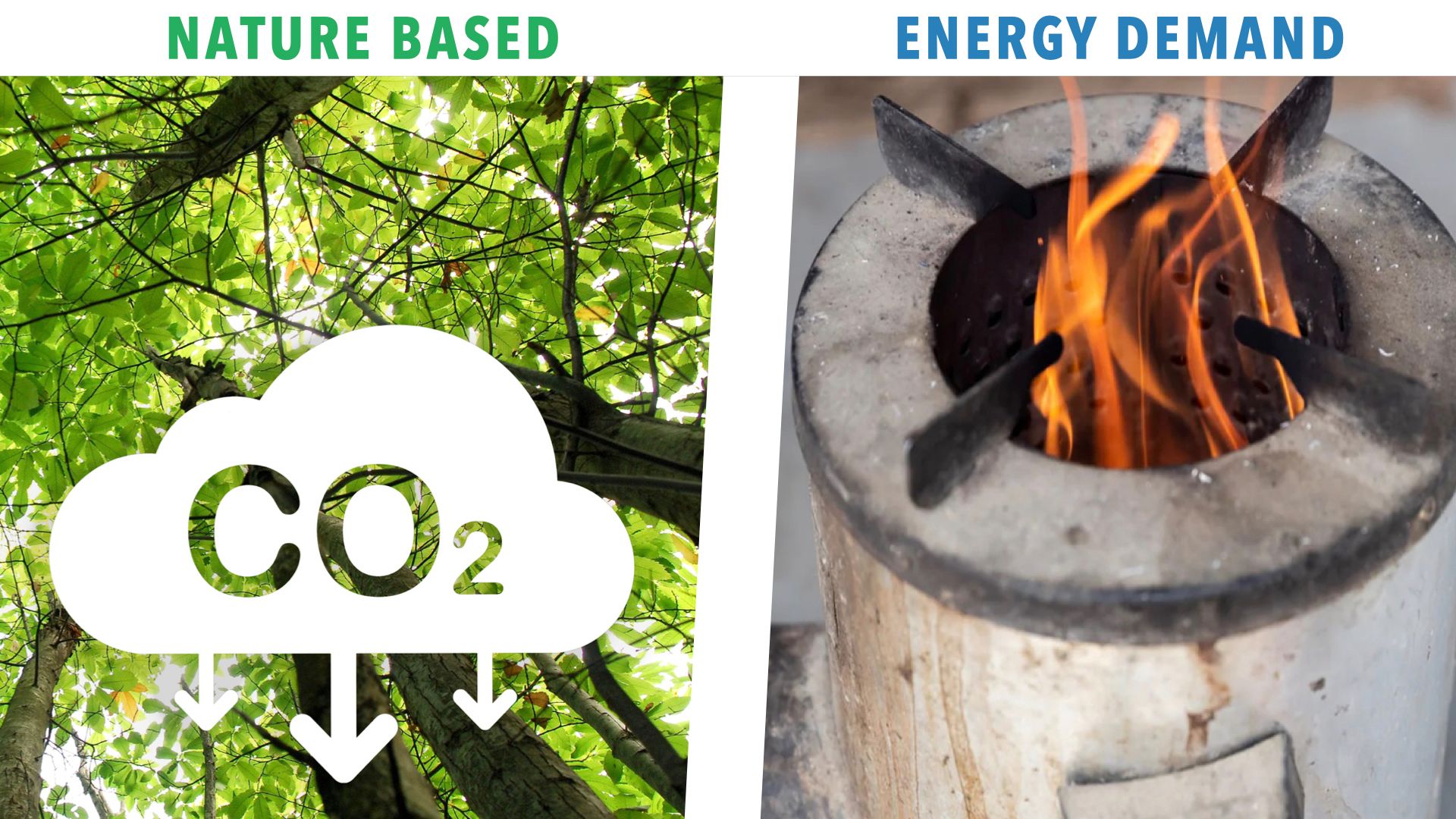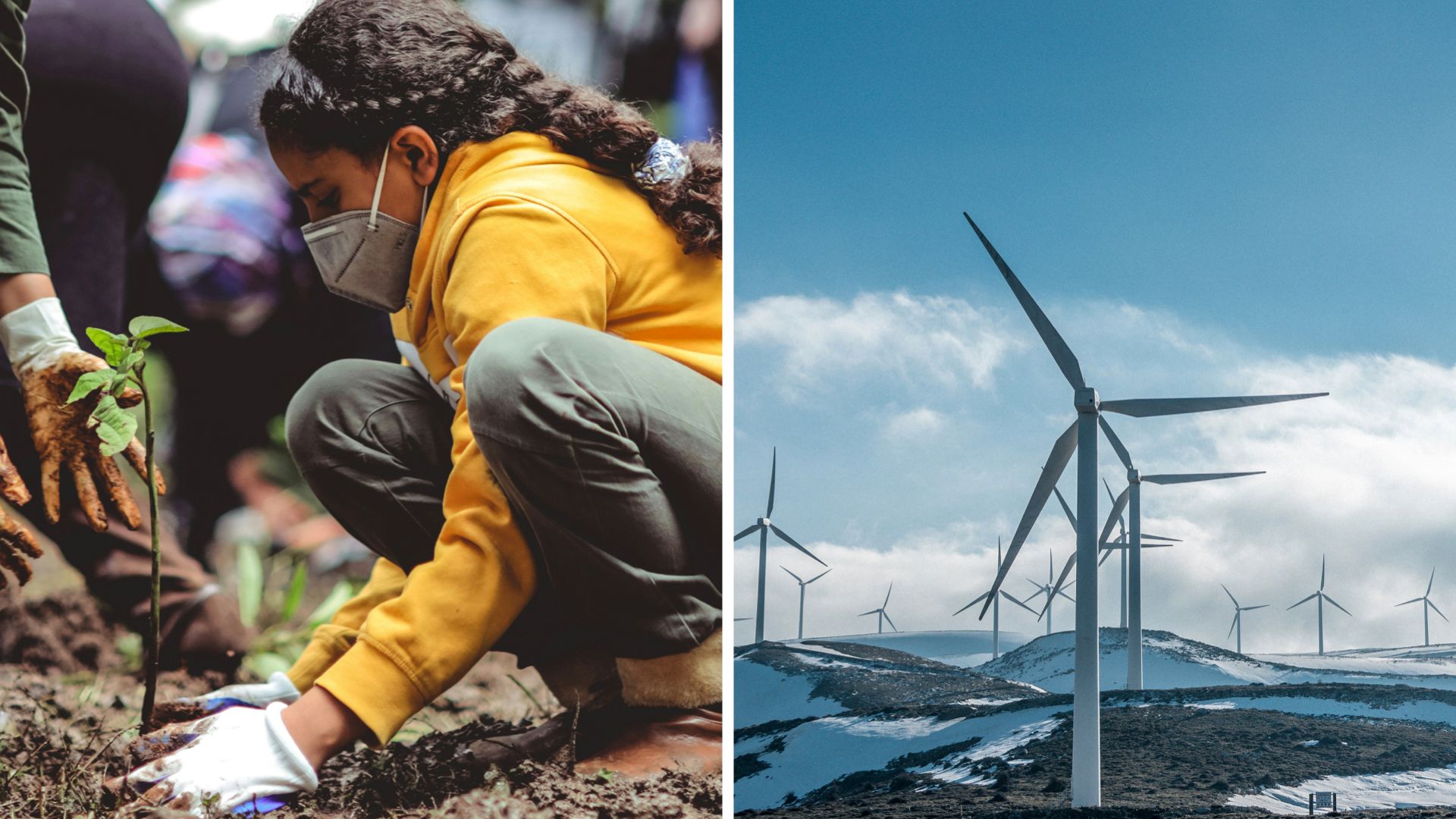Welcome! By taking positive climate action through supporting our 5 project bundles below, you and your employees will experience ongoing, company-wide utility cost savings, climate education, and carbon offsets. Click Choose Your Subscription Level below to get started, and welcome to The Climate University!

NATURE BASED 2-project bundle:
NATURE BASED (forestation) Project 1 of 2: CONGO (DRC):
This first-of-its-kind project in the Congo Basin utilizes a methodology developed by Wildlife Works. Located in an ecologically rich and diverse area home to Chimpanzees, Bonobos, and forest Elephants—it includes some of the most important wetlands in the world. The project protects the area from deforestation by stopping planned legal and reducing illegal logging by using carbon revenues. Other project activities include constructing 20 schools, 5 health care centers in 5 villages, and teaching local farmers techniques that improve agricultural production.
Estimated Annual Emission Reductions: 5,671,613 / Hectares (2.47 acres per Hectare): 299,640 / Total Buffer Pool Credits: 3,799,538

NATURE BASED (forestation) Project 2 of 2: COLOMBIA:
Partly due to this project, Amazon deforestation in Colombia dropped 36 percent compared to the previous year. To implement this project, approximately 600 indigenous guards patrol the territory to apply the surveillance, control and monitoring of forests of the RIU-SM (Annex 25). The value of discount credits to be deposited into the buffer is 20,163,974 tons of equivalent CO2.
Estimated Annual Emission Reductions: 3,622,352 / Hectares (2.47 acres per Hectare): 1,856,326

Energy Demand 3-Project bundle:
ENERGY DEMAND (cookstoves) Project 1 of 3: MALAWI:
The project: 1) decreases greenhouse gas emissions by distributing improved cookstoves that use non-renewable biomass fuel, 2) cuts down the time spent gathering inefficient and polluting cooking fuels, which has a disproportionate impact on the health, income, education, and leisure time of women and girls, and 3) safeguards forest reserves from degradation due to fuel collection, thus preserving the habitats of regional elephants, leopards, and zebras.
Estimated Total Reductions: 520,789 tons of CO2e of project greenhouse gas emissions reduced.

ENERGY DEMAND (Hydro) Project 2 of 3: INDIA (KASHMIR):
The Greenfield Hydro Power Project is located in Kashmir state of India near the world's highest mountain range, the Himalayas, at a site where no renewable energy power plant is presently operating. The plant generates power through river hydro turbines—a clean technology—as no greenhouse gas emissions are associated with the functioning of the hydro turbines, replacing approximately 1,563,247 tCO2e/year and generating 1,712,960 MWh/ year to the electrical grid.
Estimated Annual Emission Reductions: 1,563,247 tons of Co2e greenhouse gas emissions reduced annually.

ENERGY DEMAND (Wind) Project 3 of 3: CHINA (MONGOLIA):
Mongolia is known for being one of the windiest regions globally. Despite this, Mongolia continues to depend on coal power plants for electricity. This project in central Mongolia includes installing 33 wind turbines, each with a capacity of 1,500 KW. It is estimated to reduce greenhouse gas emissions by 120,508 tCO2e annually, replacing electricity from coal-fired power plants on the North China Power Grid and aiding in the prevention of the construction of new coal power plants.
Estimated Annual Emission Reductions: 120,508 tons of CO2e greenhouse gas emissions reduced per year.


